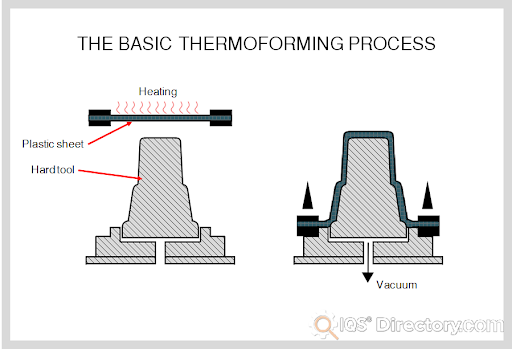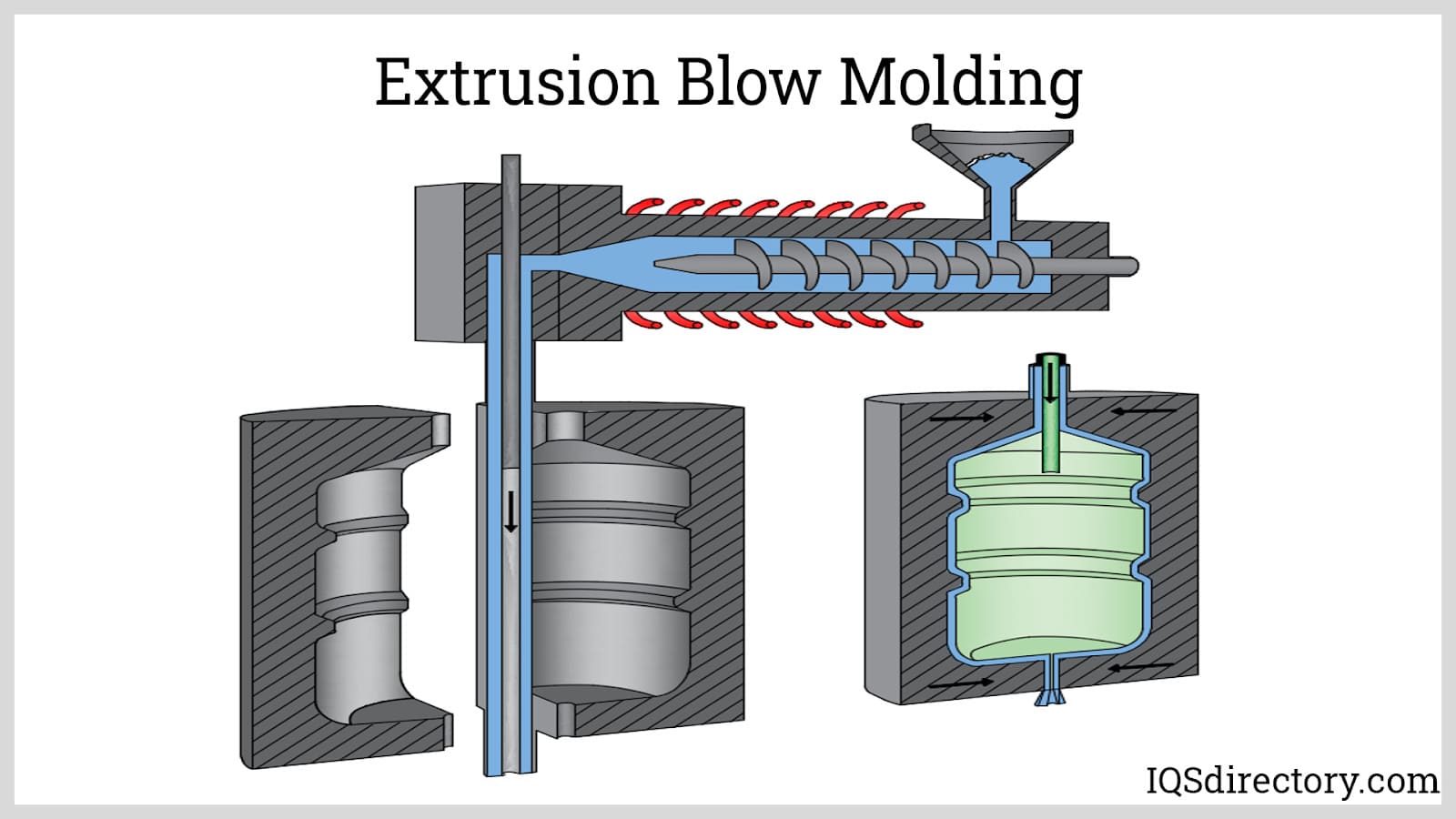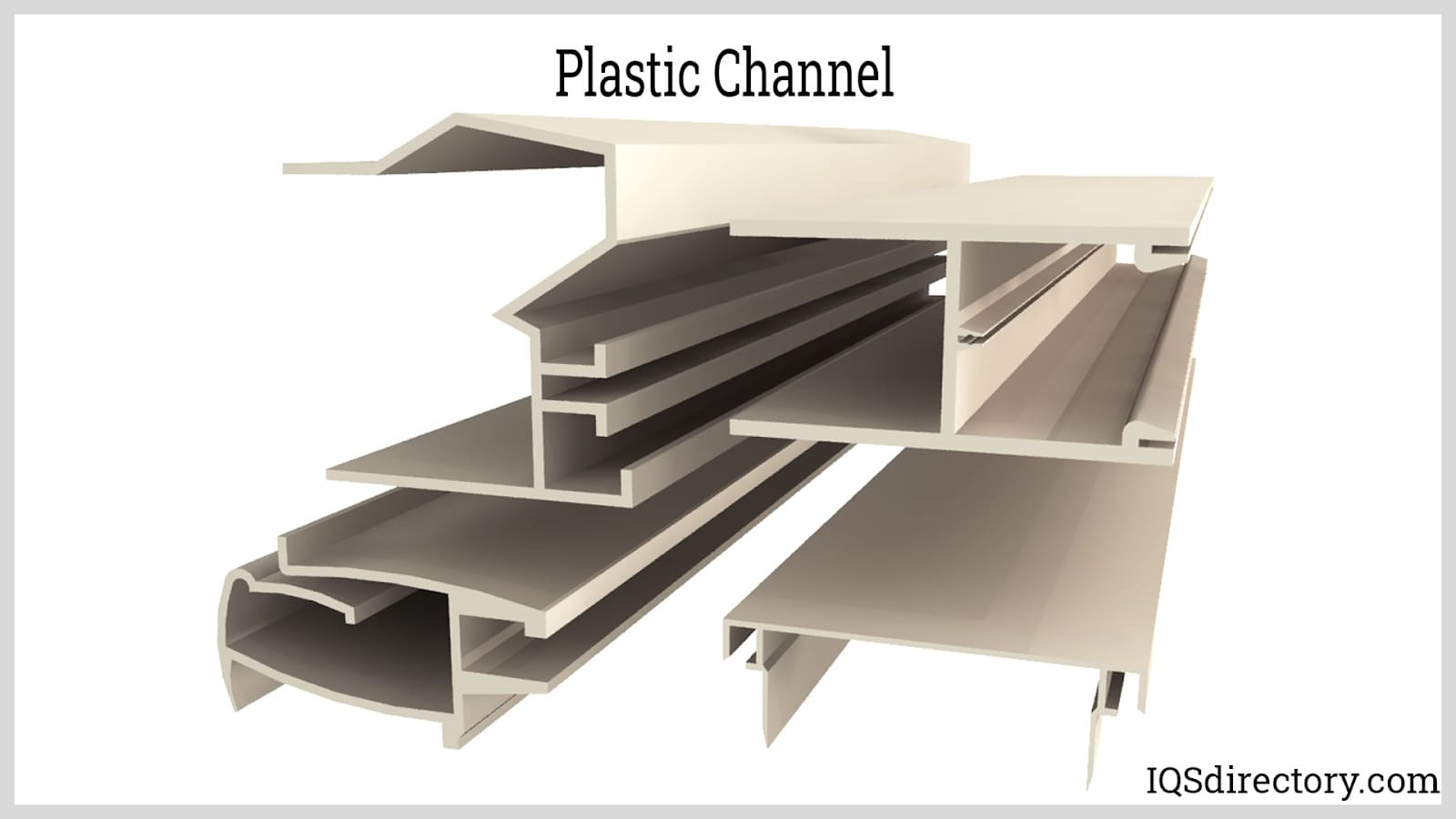Plastic Molding Manufacturers
Plastic processes differ greatly in both the way they form plastic products and in the shape and structural integrity of the products they manufacture. Blow molding, for example, is nearly the sole method by which plastic bottles for beverages, household cleaners and cosmetic products are made, as well as a range of low-cost toys and parts with low to medium performance.
Applications
The extrusion process creates linear profiles, strips and sheets with high structural integrity useful in many construction siding, trim and furniture applications. Vacuum forming, or thermoforming, forms trays, linings and thin plastic packaging from heated plastic sheets, while dip molding forms a variety of soft molds and plastic coatings. Other plastic molding processes use casts, or dies; injection molding squeezes melted (or “plasticized”) plastic resin into a closed mold, forming a solid plastic object, while rotational molding uses a type of gyroscope to evenly coat the inside of a mold, creating hollow parts with high impact resistance.
Plastic molding processes vary greatly in cost. High end plastic molding processes, such as rotational molding and injection molding, provide precision three dimensional plastic parts with structural integrity and impact resistance few other processes or materials can provide. On the other end of the spectrum, blow molding and dip molding processes offer very affordable options for long runs and mass production of containers and household commodity items. A wide range of plastic materials are molded through these processes, although some processes are more effective with certain polymers than others.
 It is the most common manufacturing technique employed in the making of objects we use each day, ranging from automotive dashboards to bottle caps and children’s toys. Plastic has become a popular alternative to metals, wood and glass as its wide range of properties are able to suit many different applications.
It is the most common manufacturing technique employed in the making of objects we use each day, ranging from automotive dashboards to bottle caps and children’s toys. Plastic has become a popular alternative to metals, wood and glass as its wide range of properties are able to suit many different applications.
Plastic polymers, in the form of thermoplastics, thermosets and elastomers, are a popular manufacturing material because of plastic’s durability and malleability. The process of plastic molding is used for mass production and prototyping because of its ability to yield high runs at close tolerances.
Plastic molding typically involves a pre-made mold and liquid plastics; however other manufacturing methods include vacuum forming, injection molding, blow molding and compression molding. The type of molding process chosen usually depends on the final intended use of the product being made, and the process is commonly used in the consumer, food service, medical, plumbing, computer and automotive industries.
Materials used in plastic molding differ in important ways: thermoplastics can be melted and molded into a wide variety of shapes as they become more pliable with the application of heat. Shapes can be remolded and adjusted if need be, however, thermoplastics tend to be more brittle in cold or freezing temperatures. Thermosets, such as melamine resin or polyimides, dry hard and brittle and can only be melted and molded once. They are however more suited to applications that require exposure to cold.
Elastomers, for example, those known as rubber, maintain a property of elasticity once cooled which is a required characteristic for some molded plastic products. Elastomers are used in the molding of children’s toys, or other objects such as tool handles which benefit from the comfort of elasticity. There are numerous advantages to plastic molding, including: fast turnaround times, lower labor costs and the ability to make complex plastic products and minimal waste.
Other materials such as metal or wood are hard to mold, especially into small and complex shapes, and without having the ability to melt and harden, can result in heavy wastage costs. Plastic however, can be bent, twisted, squeezed or turned into an almost limitless range of shapes. The negligible amounts of waste produced can be recycled through the melt and mold process, making plastic molding a responsible manufacturing choice.



















 Fiberglass Fabricators
Fiberglass Fabricators Injection Molded Plastics
Injection Molded Plastics Plastic Blow Molding
Plastic Blow Molding Plastic Dip Molding
Plastic Dip Molding Plastic Extrusions
Plastic Extrusions Plastic Tubing
Plastic Tubing Polyurethane Molding
Polyurethane Molding Rotationally Molded Plastics
Rotationally Molded Plastics Vacuum Formed Plastics
Vacuum Formed Plastics Castings & Forgings
Castings & Forgings Bulk Material Handling
Bulk Material Handling Electrical & Electronic Components
Electrical & Electronic Components Flow Instrumentation
Flow Instrumentation Hardware
Hardware Material Handling Equipment
Material Handling Equipment Metal Cutting Services
Metal Cutting Services Metal Forming Services
Metal Forming Services Metal Suppliers
Metal Suppliers Motion Control Products
Motion Control Products Plant & Facility Equipment
Plant & Facility Equipment Plant & Facility Supplies
Plant & Facility Supplies Plastic Molding Processes
Plastic Molding Processes Pumps & Valves
Pumps & Valves Recycling Equipment
Recycling Equipment Rubber Products & Services
Rubber Products & Services